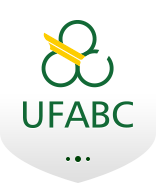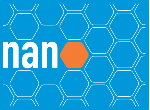Banca de QUALIFICAÇÃO: CARLA CAROLINA SILVA BANDEIRA
Uma banca de QUALIFICAÇÃO de DOUTORADO foi cadastrada pelo programa.DISCENTE : CARLA CAROLINA SILVA BANDEIRA
DATA : 04/12/2024
HORA: 14:00
LOCAL: Sala 303 do Bloco B do Campus de Santo André da Universidade Federal do ABC
TÍTULO:
Gold/boehmite substrates for SERS-based detection of the hormone hepcidin in saliva for rapid hyperinflammation detection.
PÁGINAS: 100
RESUMO:
Hyperinflammation is an unbridled biological response of the immune system, which can cause damage to the body itself and may lead to death. It is associated with severe or critical levels of various diseases, including COVID-19, dengue, sepsis, Ebola virus disease, and various autoimmune diseases. This process is linked to an excessive release of cytokines, known as a "cytokine storm." Some studies point to the relationship between severe cases and increased levels of interleukin 6 (IL-6), which is an essential regulator of hepcidin during inflammation, responsible for the absorption and availability of iron in the blood. Hepcidin levels can be measured in the saliva of patients affected by hyperinflammation-related diseases, making it an excellent biomarker for
the rapid screening of hyperinflammation across various diseases, acting as a predictor of fatality. The widely used method for detection is RT-PCR, considered the gold standard among other techniques. However, due to its limitations, efforts are being made to develop effective methods that address these shortcomings. In this context, spectroscopy is being introduced into this field of biomarker detection, even at low concentrations, which makes detection impossible with conventional Raman spectroscopy but feasible through Surface-Enhanced Raman Spectroscopy (SERS). Based on this need, the development of SERS substrates with promising components, such as gold and boehmite, has been proposed for detecting the hormone hepcidin in saliva, aiming for rapid hyperinflammation screening. The substrates, which vary in the thickness of the gold layer (20 to 100 nm) and the method of obtaining the boehmite (27 nm), were prepared and extensively characterized using
Raman spectroscopy, FTIR, and morphological analyses by FEG-SEM. Commercial hepcidin solutions were tested to verify the possible efficiency of these substrates in detecting the hormone. The results obtained so far confirm that the substrates were able to detect hepcidin, even at low concentrations, and demonstrated the amplification
of the Raman signal through SERS. The next tests will be conducted using saliva from COVID-19 patients to access the effectiveness of these substrates
MEMBROS DA BANCA:
Presidente - Interno ao Programa - 1545738 - MARCIA TSUYAMA ESCOTE
Membro Titular - Examinador(a) Externo ao Programa - 3047441 - MONICA BENICIA MAMIAN LOPEZ
Membro Titular - Examinador(a) Externo à Instituição - ANDERSON ZANARDI DE FREITAS - IPEN
Membro Titular - Examinador(a) Externo à Instituição - JANETE DIAS ALMEIDA - UNESP
Membro Suplente - Examinador(a) Interno ao Programa - 2946001 - ANTONIO ALVARO RANHA NEVES
Membro Suplente - Examinador(a) Externo ao Programa - 1982740 - GUSTAVO MORARI DO NASCIMENTO
Membro Suplente - Examinador(a) Externo ao Programa - 1654772 - CAMILO ANDREA ANGELUCCI




